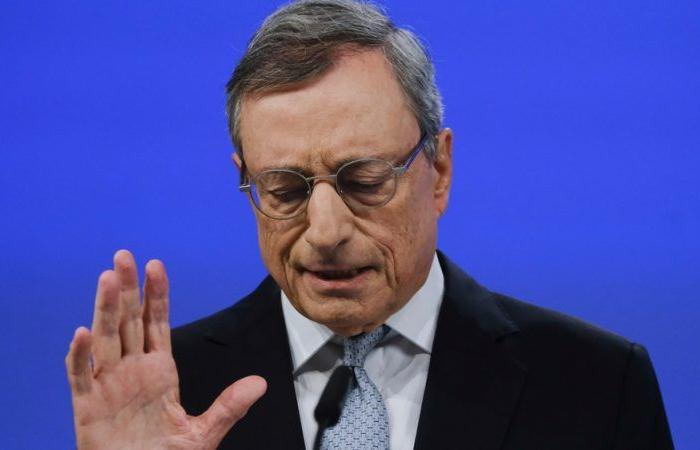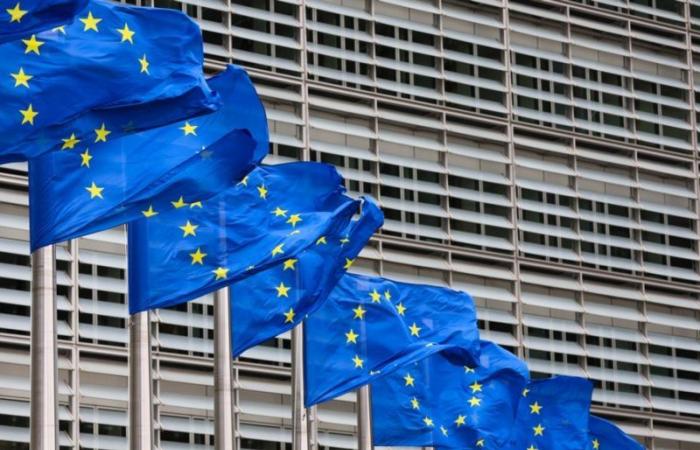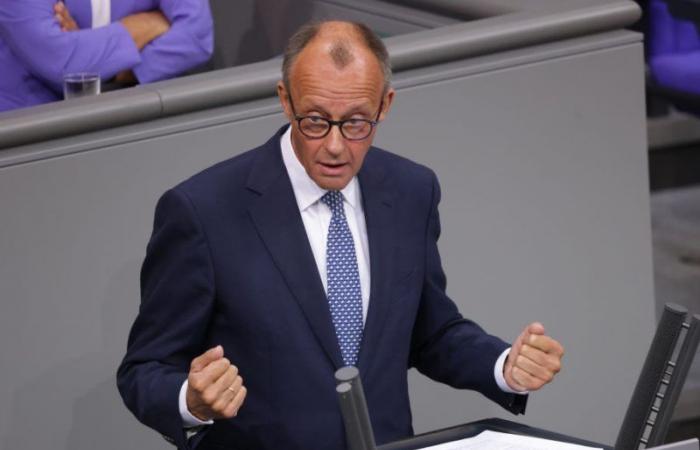The use of common debt by the European Union (EU) – based on the model of the NextGenerationEU post-pandemic recovery fund endowed with 806.9 billion euros – is not “ essential » so that Europe remains competitive against China and the United States, declared Mario Draghi on Monday September 30.
Perhaps in a bid to reassure supporters of fiscal austerity, the Italian technocrat expressed dismay on Monday that most of the discussion around his recent report on EU competitiveness has focused on his proposal of renewal of financing through the issuance of joint debt, a model based on the post-pandemic recovery program NextGenerationEU.
As a reminder, with the NextGenerationEU program, the 27 Member States of the Union agreed for the first time on the issuance of a common debt in order to finance an investment mechanism on a European scale.
“This proposal [pour une succession au programme NextGenerationEU] was the very first thing people reacted to”lamented Mario Draghi during an event organized by thethink tank Bruegel.
“I must say that although I like this concept, it is not the main element of the report”insisted the former president of the European Central Bank (ECB), adding that “there are many good reasons to have it, [mais] it’s not an essential ingredient.”
Mario Draghi’s report, published earlier this month, called for more widespread use of EU issuance of common debts in order to“allow investment projects [européens] common » and “help integrate capital markets” building on the NextGenerationEU model.
However, he also noted that the issuance of more joint debt could only take place if the political and institutional conditions were “in place”.
However, the proposal to generalize the use of common debt was rejected by the Netherlands and Germany, two member states traditionally ” frugaux », who strongly oppose the renewal of the post-pandemic financing program beyond its expiration, scheduled for August 2026.
Conversely, the idea received strong support in Spain — one of the biggest beneficiaries of NextGenerationEU funding — as well as France, with Emmanuel Macron repeatedly emphasizing the need for such instruments to finance key investments, particularly in the defense sector.
Although the Recovery and Resilience Facility (RRF) — the flagship program of the post-Covid recovery package — has been marred by allegations of late payments, misuse of funds and irregularities, its renewal beyond 2026 has also received support from influential politicians at EU level.
For example, the European Commissioner for the Economy Paolo Gentiloni called for transforming the FRR into ” model “for the Union’s future investment programmes.
Eurogroup President Paschal Donohoe also described NextGenerationEU as “the piece of the puzzle” which will allow Member States to comply with Brussels’ strict new budgetary rules while granting “a greater priority to capital investments than in the past”.
In his report on competitiveness, Mario Draghi himself presented the continued issuance of common debt as an important catalyst for private market liquidity.
“Like many of the projects [nécessaires de l’UE] are considered in the long term — such as research and innovation funding and defense procurement—, the show [d’une dette] common should, over time, produce a deeper and more liquid market for EU bonds, thereby enabling this market to gradually support the integration of European capital markets.”
A “relatively conservative” estimate of investment needs
On Monday, the Italian economist also pointed out that the estimate of the report of a « minimum »750 to 800 billion euros per year in additional investments in the fields of ecology, digital technology and defense could be a figure “relatively conservative”.
In particular, he noted that this figure — which represents around 5% of the EU’s annual GDP — does not include additional funding for education or climate protection.
He also said that simulations by the European Commission and the International Monetary Fund (IMF) suggest that the proposed sum could become more economically and politically feasible with minimal productivity gains — of the order of 0.2% per year for 10 years, according to the IMF.
“Even with a small increase in productivity,the overall amount is realistic. And public funding [nécessaire] is less » said Mario Draghi.
Relocation of energy-intensive industries
The Italian technocrat also defended his call for subsidies to keep energy-intensive industries in Europe, many of which are based in Germany, Europe’s industrial powerhouse.
He noted that sectors such as steel, aluminum and chemicals produce goods that end up“everywhere in our economies” and are used in consumer and defense products.
“We cannot simply [laisser ces industries partir] in another country outside [de l’UE]. We want to keep scientists”he explained.
« [Elles] are also, like others [industries]in unequal competition with foreign countries. The arguments in favor of their support are therefore, I think, indisputable. »
Mario Draghi suggested that in the future, politicians could help facilitate“relocation”of these industries in other parts of Europe in order to benefit from the lower costs of green energy.
Separately, he said Europe’s strong welfare state should soften the impact of such relocation on citizens, meaning such a shift will not be felt as keenly as in the United States. United in the 1990s.
“We are in a better position than the United States. We have a strong social protection system… So there is no risk that we will abandon people,”he argued.

[Édité par Anne-Sophie Gayet]








